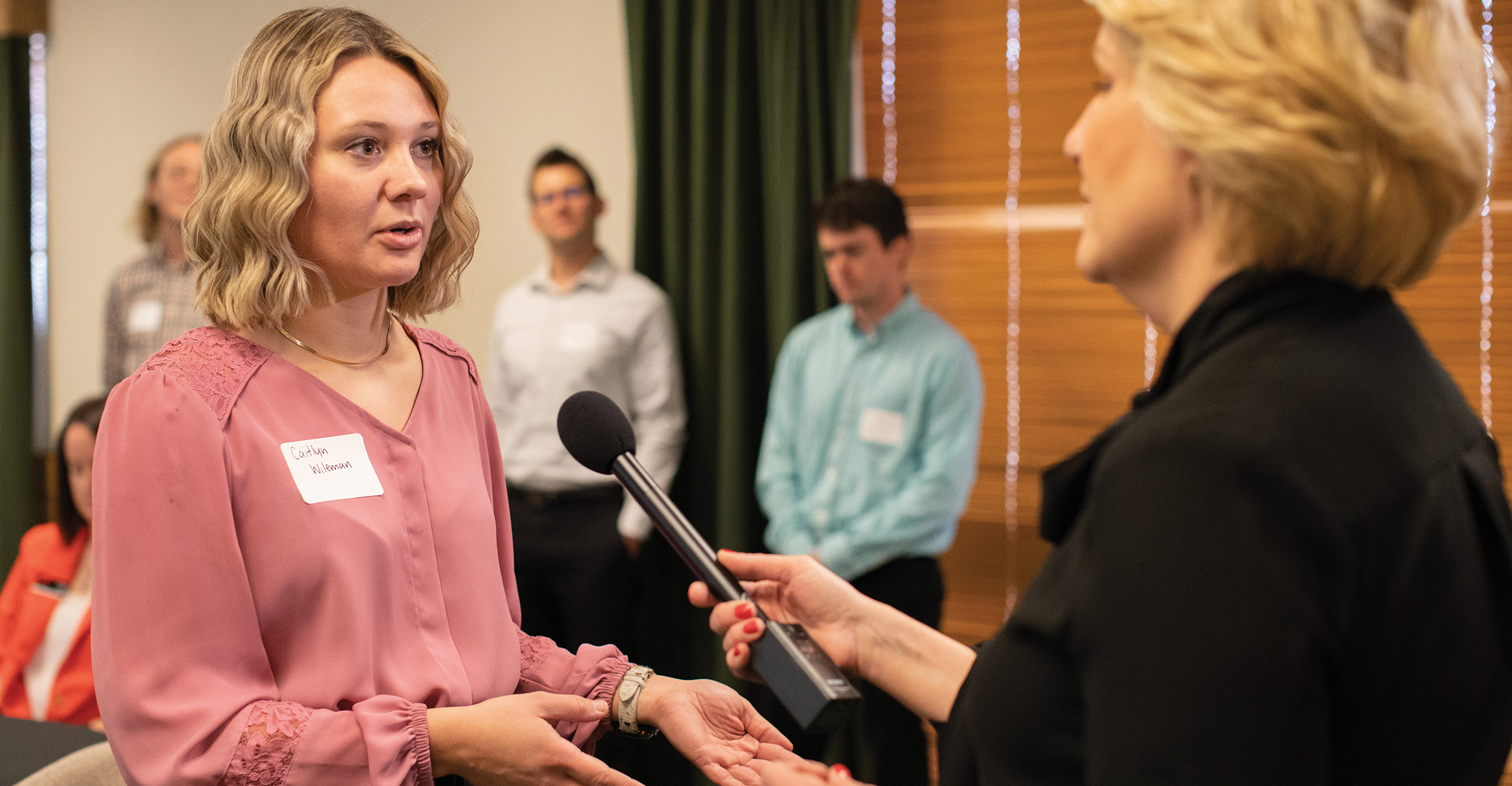
Science Meets Society
Friday, May 27, 2022
Media Contact: Jami Mattox | Agricultural Communications Services | 405-744-8061 | jami.mattox@okstate.edu
Science and research are constantly developing as needs arise around the world. With constant development comes a need for translation of scientific findings.
Science communication is the variety of practices used to transmit scientific ideas, methods, knowledge and research to common audiences in an understandable and useful way.
“I started working with personnel across Oklahoma State University to develop the Science Communication Academy to teach graduate students how to communicate effectively about their research,” said Quisto Settle, assistant professor in the OSU Department of Agricultural Education, Communications and Leadership.
Settle said he developed the idea of a Science Communication Academy during the past several years.
“We are not communicating clearly about the information we know and how we find that information,” Settle said. “People have begun to lose trust in scientific institutions.”
A majority of the members in the scientific community rely on public support, he said.
However, the scientific community could be more proactive of ensuring research reaches the people who can use it, Settle added.
“If we don’t have the public’s support, we cannot continue to conduct research,” Settle said. “If the public does not use our research, there is no point to doing it at all.”
The program included two sessions — the first to help participants develop a general understanding of science communication and the second to improve their social media use and online presence. The free six-hour sessions were March 23 and April 20.
“The first session focused on concepts like pitching ideas, being interviewed, and interacting with communicators,” Settle said. “The second session focused on do-it-yourself content creation so participants could communicate research concepts quickly and easily.”
The idea of working on the communication gap is not new and is something being worked on across the nation, Settle said.
The biggest goal of the first Science Communication Academy was to provide participants with practical, hands-on experience and help them become more comfortable communicating their research, Settle said.
Participants learned from professionals experienced in practicing scientific communication, such as staff from OSU Agricultural Communications Services, OSU Brand Management, Edmon Low Library, the OSU Graduate College and KOSU radio, he said.
Fourteen participants from the Ferguson College of Agriculture graduate programs attended the academy. The selection criteria was to be a master’s student with a research project to use as a reference point for activities.
“In academia, researchers speak at a certain level and expect their audience to comprehend,” said Caitlyn Wileman, academy participant and master’s student in the OSU Department of Animal and Food Sciences. “I have always been passionate about simplifying it into a common language that is easier for consumers to understand.”
The main goal of research is to publish results to be used, Wileman said. The Science Communication Academy allowed participants to learn how to translate their research into accessible information, she added.
“Science without being communicated to the public is not useful,” said Daniel Carrera Lopez, academy participant and master’s student in the OSU Department of Entomology and Plant Pathology. “As scientists, we must have the ability to communicate to others and transmit correct information.”
Participants benefited from learning techniques to improve research communication and reach more people, Carrera Lopez said.
“My biggest takeaway was learning to alter how I describe my research,” Wileman said. “When I tell someone about what I’m studying, I have to understand the audience’s background knowledge on the topic and explain the bigger picture behind why the research matters.”
The scientific community needs more people to communicate more effectively, Settle said.
“I want participants to become more effective science communicators, regardless of what avenues they take,” Settle said. “Whether it’s an academic career or an industry career, I hope to make their careers a little bit better, and hopefully, the world gets to be a little bit better, too.”
Story By: Emily Gerstenkorn | Cowboy Journal
